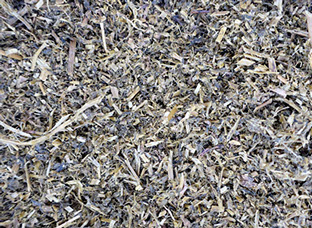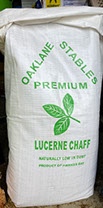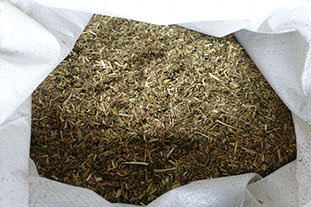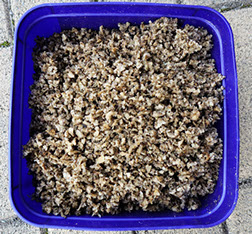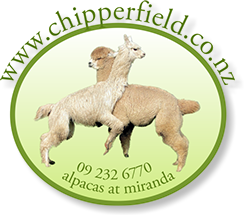
Alpaca Nutrition
Alpaca Nutrition
(What to feed your alpacas)
First the disclaimer: I'm not a vet, and not an animal nutritionalist. So everything that follows is what we've discovered works for our animals.
And our local farmer reckons we spoil our alpacas. Certainly, I know that many of our friends do not give their animals as many supplementary foodstuffs as we give ours.
But our philosophy is simple; if we keep them healthy by making sure they get all the nutrients they need then it keeps the number of visits we need from the vet down. So in the long term, we save money.
We've found that generally alpacas are a bit like a cross between a sheep and a pony, when it comes to health and nutrition. Tuck that in the back of your mind, and things seem to work.
The basic ingredient - Grass
It's obvious, isn't it? Alpacas eat grass. And alpacas can, and will, survive on just grass.
BUT there's grass and grass. And you need enough of it.
So what do I mean by that?
First, there are many different varieties of grass, and those that are best for cattle aren't always the best ones for alpacas. Rye Grass Staggers can be an issue for alpacas. So although we have some on our property, whenever a new sprinkling of grass seed is needed somewhere we go for a mixture that does not contain it. Our favourite mix (from Farmlands) is one that is also suitable for a horse paddock. It contains Tall Fescue, Cocksfoot, Brome, White Clover, Timothy and a good sprinkling of chicory & plantain too.
This mixture suits alpacas in another way to. They are not grazers (like sheep), but browsers. They can be picky about what they eat, and they like variety. So if there are a few patchs of something different, they're in their element.
Second, you must'nt put too many alpacas on a piece of ground unless you're prepared to supplementary feed them. It's difficult to give an exact number of alpacas that a hectare can support, but bear the following in mind; The alpaca's digestive system is very efficient. It is a quasi ruminant – it has three stomachs. It is 80% more efficient than a sheep at converting food to energy. So although heavier than your average sheep, you can in theory fit more alpacas on the same land area. I'd aim for the same stock units as a sheep though...
And having said that alpacas can be picky - if they're hungry enough, they'll eat whatever is around!
Hay
Really an extension of grass. And the first of the essential supplementary feeds, if you don't have enough grass. Look for good quality hay that is suitable for horses & ponies.
Haylage
Haylage is semi-dried grass that has been baled (like hay) then wrapped in airproof plastic. This keeps it moist, and allows it to slightly ferment, but stops the decay process until it is opened.
I've included it on our page for nutrition, but we've never really got on very well with haylage.
For the number of alpacas we have, only the small haylage bales are suitable, or it goes off before we've had a cahnce to use it all. Also I think we've been unlucky with the quality of the ones we've bought. We've never found it to be good value for us. Instead, we use...
FiberProtect
To find out more about this lovely stuff, go to http://www.fiber-fresh.com/equine/products/fiberezy/.
We find FiberEzy to be a great and relatively cheap supplement for our alpacas.
It's basically a slightly fermented lucerne & timothy mix. I like that it has some of the vitamins and minerals that we know are missing from our very poor soil.
Lucerne Chaff
A good, reasonably priced mixer and filler, that gives the alpacas a bit of protein too.
BetaBeet
Betabeet is produced during the extraction of sugar from the root crop sugar beet.
We really only use this in the winter, when the paddocks are running short of grass, and we have feeding mums that need an extra few calories.
The absolute number one thing to remember is ALWAYS to soak it well before adding it to your alpaca's feed. Look at the pictures and you'll see why. Picture 1 shows just one scoop of BetaBeet before water is added; picture 2 shows it afterwards. You need about 5 parts water to 1 part BetaBeet flakes. So a scoop goes a long way...
You'll find the full product sheet at http://www.dunstan.co.nz/products/supplements/dunstan-betabeet
Alpaca Pellets
Alpaca pellets can work out to be the most expensive bit of supplementary feeding. When we started in our alpaca careers, we assumed that we had to give a certain amount of these every day. But that's not necessarily the case.
The main reason for giving your alpacas pellets throughout the year are for the additional vitamins and minerals that are included in them. They contain lucerne (for energy & protein), and the fat soluble vitamins A, D and E, B1, biotin, plus dicalcium phosphate. This is in recognition of the higher requirements for phosphorus by Alpacas and Llamas.
But if you can provide your animals with the correct quantity of these in other ways, then in theory they don't need pellets. Many alpaca breeders I know use them as a treat - as 'lollies', a handy way of getting your alpacas to eat out of your hand, and to become friendlier.
There is one time of the year when pellets can be handy for another reason.
When Facial Eczema season is upon us, you can buy High Zinc pellets. This is an easy way of getting our alpacas to eat the increased levels of zinc that is needed to help protect them from this nasty disease.
Around our way, the alpaca pellets are from Country Harvest. Can't find a website for them....
Agrisea Seaweed Animal Nutrient
I truly believe that this one (expensive) ingredient has saved us thousands of dollars on vets bills, because of the improved health of our animals. Agrisea is made from seaweed - and contains many trace elements, minerals & vitamins that are unfortunately missing from our land. We used to mix the liquid animal nutrient in with dry lucerne chaff, but this year Agrisea have introduced pellets. These are soooo much easier to measure out and mix in with the food mix. And they're so concentrated that just a couple of grams per alpaca per day is required (and hubby, apparently, grinds them up in our coffee beans too!) so Agrisea that a weeks's dose is given at one time.
Find out more from http://www.agrisea.co.nz - not the most user-friendly website (we keep on telling them!) but they're really nice people so we'll forgive them!
Chipperfield's Daily Keep'em'Healthy Diet
Here's what we feed our alpacas every day: (one batch feeds 8 animals)
8 x handfuls of lucerne chaff
8 x handfuls of FiberEzy
2 x scoops of alpaca pellets
Then once a week mix in 1/3 cup of Agrisea Seaweed Pellets.
If we're feeding Betabeet then we mix one scoop, well soaked in water, in with the lucerne chaff before we add the rest.
At Facial Eczema season, read the bag for dosing levels, but we've found that one large scoop of high zinc pellets per alpaca give about the correct amount.

